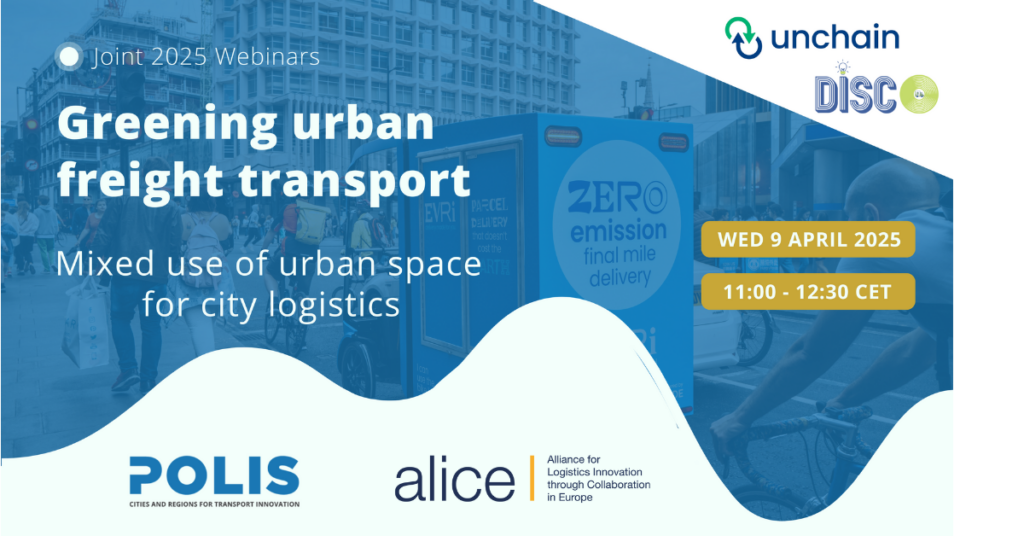Thursday, April 10th, 2025
On 9 April 2025, ALICE and POLIS co-hosted a joint webinar as part of their ongoing series exploring innovative solution towards more sustainable urban logistics. Titled “Mixed Use of Urban Space for City Logistics”, the session focused on how dynamic and multiple use of existing urban areas, and how sharing space between logistics operations and other activities can improve efficiency, sustainability and liveability in cities, drawing on insights from the EU-funded projects DISCO and UNCHAIN, and a good practice from Amazon in Paris.
As cities face increasing freight flows and competing demands for limited space, the webinar presented practical strategies for integrating logistics functions into the urban context, without compromising public accessibility, heritage, or quality of life.
Highlights from the webinar
Urban logistics in Thessaloniki: adaptive reuse of exhibition spaces
Vasilis Giannoudis (CERTH) presented the DISCO project’s Living Lab in Thessaloniki, demonstrating how underutilised premises at the TIF-HELEXPO exhibition centre were repurposed for logistics operations. In partnership with ACS Courier and the municipality, the pilot project relocated inner-city deliveries to a more strategic location on the outskirts of the city. Enabled by the upgraded Wear&M&O platform, a digital tool akin to an “Airbnb for urban logistics space”, the initiative optimised use of existing infrastructure and reduced traffic congestion in the historic centre.
Key takeaways:

Florence and the UNCHAIN project: smart management of a heritage city
Alessandra Barbieri from the City of Florence shared how the municipality is addressing freight challenges in a UNESCO-protected urban environment. Through the UNCHAIN project, Florence is piloting a new Sustainable Urban Logistics Plan based on stakeholder collaboration and integrated into wider mobility, climate, and energy strategies.
Florence is testing:
Paris case study: repurposing bus depots for last-mile delivery
Joy Pasquet (Amazon Logistics) presented an innovative public-private partnership in Paris, where underused RATP bus depots are now shared as logistics micro-hubs. This arrangement supports zero-emission last-mile delivery by cargo bikes and push carts, reducing road congestion and noise pollution.
This approach has demonstrated:
The Q&A session, moderated by Marion Cottet (ALICE), highlighted common challenges and enablers in the three cities:
This webinar is part of a broader dialogue on how to better integrate freight and passenger transport to support sustainable urban mobility. The next webinar in the POLIS – ALICE series will take place on 23 May 2025 and will focus on combined freight and passenger transport solutions.
